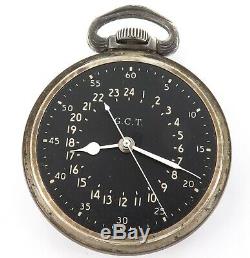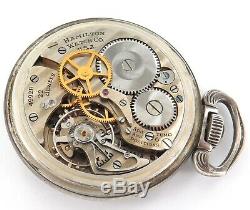
- Home
- Brand
- Antique (6)
- Ball (87)
- Ball Hamilton (25)
- Ball-hamilton (17)
- Elgin (16)
- Elgin Father Time (5)
- Hamilton (4290)
- Hamilton 922-b (3)
- Hamilton 940 (14)
- Hamilton 941 (5)
- Hamilton 992-b (6)
- Hamilton 992b (10)
- Hamilton Gct 4992b (4)
- Hamilton Watch Co (8)
- Hamilton Watch Co. (14)
- Illinois (9)
- Pocket Watch Case (4)
- Wadsworth (6)
- Waltham (8)
- Waltham Vanguard (4)
- ... (1066)
- Case Material
- 10k Gold Filled (112)
- 14k Gold Filled (45)
- Aluminum (67)
- Base Metal (87)
- Base Plate Metal (15)
- Gold (19)
- Gold Fill (15)
- Gold Filled (869)
- Gold Plated (128)
- Nickel (39)
- Silver (29)
- Silver Plated (23)
- Silverode (15)
- Silveroid (15)
- Stainless Steel (95)
- Sterling Silver (12)
- White Gold (14)
- White Gold Filled (11)
- Yellow Gold (64)
- Yellow Gold Filled (15)
- ... (3918)
- Closure
- Ball Hamilton 999-b (2)
- Display Case (5)
- Double Half Hunter (2)
- Double Hunter (35)
- Full Hunter (109)
- Half Hunter (34)
- Hamilton 992 (5)
- Hamilton 992 Elinvar (2)
- Hamilton 992-b (16)
- Hunter (4)
- Hunting (5)
- Hunting Case (2)
- Open Face (2165)
- Open Face Case (4)
- Open Face Display (2)
- Screw Back And Bezel (3)
- Swing Out (2)
- Unknown (2)
- ... (3208)
- Department
- Movement
- 16 Size (4)
- 17 Jewels (2)
- 22 Jewels Gov 4992b (24)
- 950b (3)
- 992b (12)
- Dual Time Zone (2)
- Lever (2)
- Lever Set (4)
- Manual (3)
- Manual Wind (19)
- Manual Winding (3)
- Mechanical (50)
- Mechanical (manual) (1206)
- Mechanical 21 Jewel (2)
- Mechanical Wind (14)
- Navigational (4)
- Openface (3)
- Quartz (8)
- Rail Road Grade (84)
- 993 (2)
- ... (4156)
- Type
Ww2 1942 Hamilton Gct Master Navigator 4992b 16s 21j 6 Adj Pocket Watch






WW2 1942 HAMILTON GCT MASTER NAVIGATOR 4992B 16S 21J 6 ADJ POCKET WATCH. Currently working and was tested over a 15 hour period and kept near perfect time, maybe 5 to 10 seconds either way. Grade 4992B, Model 5, 22J, 16S, stem set, stem wind, 6 adjusts, centre seconds sweep hand with date serial number 4C68518. The base metal case is 51.3mm in diameter. Dial has some minor wear, case back is worn, perspex has wear. This is the buyers / importers responsibility. We are constantly adding to our ever increasing range and have a large assortment of American Railroad Grade Pocket Watches. Were amongst the highest grade watches made, having been made for the railways makes them a great choice to use every day, mainly for their durability over time.
Their lower production quantities and of course their high grade movements make them also a great gift or investment. A typical railroad's requirements for a pocket watch in the early 20th century might include. Only American-made watches may be used (depending on availability of spare parts). Only open-faced dials, with the stem at 12 o.
Minimum of 17 functional jewels in the movement. Size 16 or 18 only. Maximum variation of 30 seconds (approximately 4 seconds daily) per weekly check.
Watch adjusted to at least five positions: Face up and face down (the positions a watch might commonly take when laid on a flat surface); then crown up, crown pointing left, and crown pointing right (the positions a watch might commonly take in a pocket). Occasionally a sixth position, crown pointing down, would be included.Adjusted for severe temperature variance and isochronism (variance in spring tension). Indication of time with bold legible Arabic numerals, outer minute division, second dial, heavy hands. Lever used to set the time (no risk of inadvertently setting the watch to an erroneous time, when winding the watch with the stem). Anti-magnetic protection (after the advent of diesel-electric locomotives).
The minimum requirements were raised several times as watch-making technology progressed, and the watch companies produced newer, even more reliable models. By WW2, many railroads required watches that were of a much higher grade (as many as 23 jewels, for example) than those made to comply with the original 1891 standard. _gsrx_vers_841 GS 7.0.16 (841). The item "WW2 1942 HAMILTON GCT MASTER NAVIGATOR 4992B 16S 21J 6 ADJ POCKET WATCH" is in sale since Thursday, April 25, 2019.
This item is in the category "Jewellery & Watches\Watches, Parts & Accessories\Pocket Watches\Antique". The seller is "hnco" and is located in Woolloongabba, Brisbane.
This item can be shipped worldwide.
- Gender: Men's
- Number of Jewels: 22 Jewels
- Modified Item: No
- MPN: Does Not Apply
- Style: Military
- Closure: Open Face
- Pocket Watch Size: 16S
- Brand: Hamilton
- Movement: Mechanical (Hand-winding)
- Serial Number: 4C68518
- Display: Analog
- Model: 5
- Year of Manufacture: 1920-Now
- Features: 24-Hour Dial

